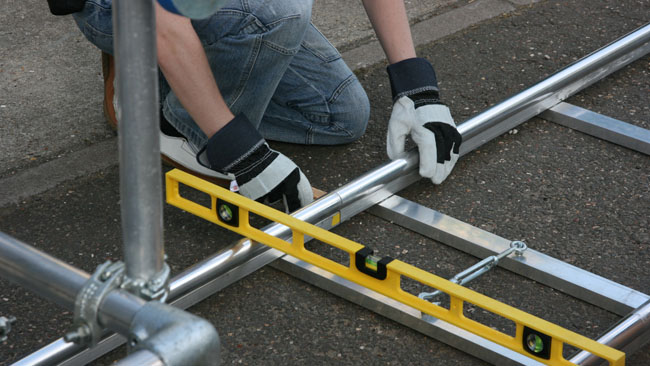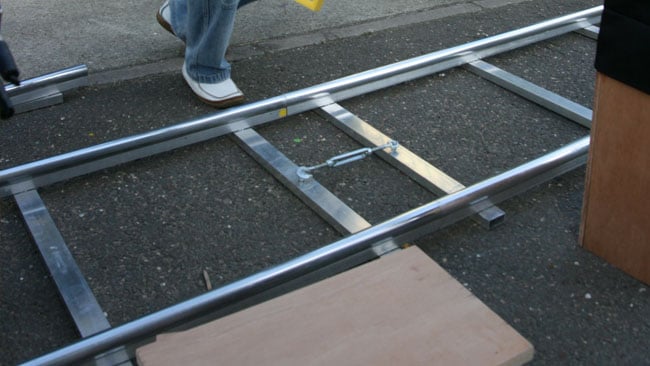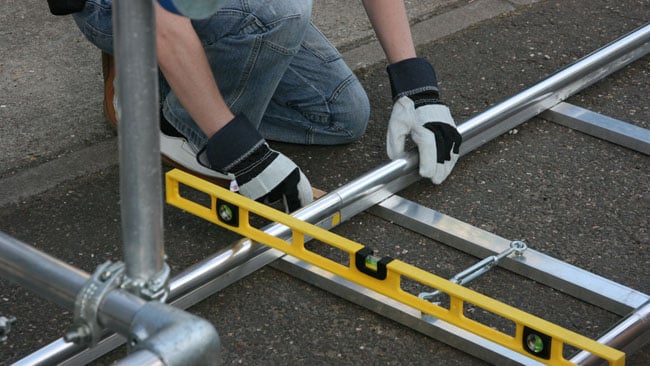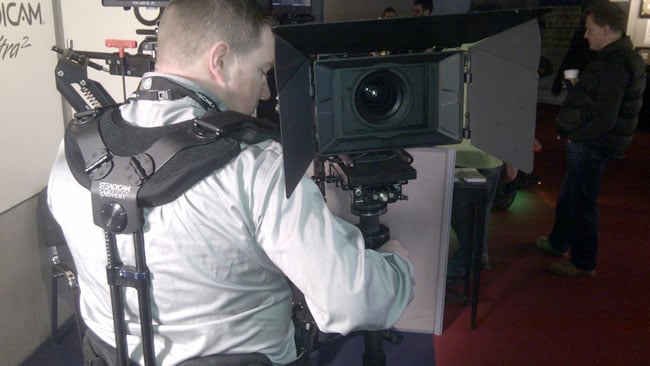
 Camera slider graphic by www.shutterstock.com
Camera slider graphic by www.shutterstock.com
In a response to our recent article on slider fatigue, Phil Rhodes comes to the defence of the slider or, rather, the "phenomenon of parallax."
A little while ago, the very wonderful Mr. Roland Denning told us all about the problems with now-ubiquitous sliders and, in many ways, he was exactly right. His concerns centered mainly on the use of sliders to shoot conversations and the difficulties of ensuring the camera move is justified by the story content of the scene. This is a consideration that's overlooked far too often in camerawork, especially by people interested in adding a bit of glamour to what can otherwise be a tedious talking-head shot (and who hasn't been in that position). Sometimes, it's best to just shoot the scene and, while there are always a million concerns over framing, blocking, motion and production design, it's often better just to aim the camera at the actors and let them do their work.
 Okay, this isn't a slider. This is dolly track, and it goes further.
Okay, this isn't a slider. This is dolly track, and it goes further.
But it still shows us something about the scene that a static camera can't.
But not always. Moving the camera, especially along a smooth, well-defined path, gives the audience something that Roland touched on briefly in his article: three-dimensional information about the scene, via the phenomenon of parallax.
3D, pre-stereoscopic
Given all the effort that's been put into making stereoscopic 3D work in the last few years, it's perhaps slightly surprising that there has long been a way of showing the audience depth without having to put special attachments on the projector, without having to make the audience wear dorky glasses and without giving anyone a headache. Those approaches are designed to mimic the perception we get of the real world by showing each eye a slightly different view at the same time, a process we could, if we wanted to be published in a heady scientific journal, call binocular multiplexing. Moving the camera creates a different but related situation: instead of seeing two views of the same scene at once, we see two views of the same scene one after the other. We could call this temporal multiplexing and it isn't quite the same thing. Nonetheless, when we're talking about a delay of one twenty-fourth of a second between seeing two views, the delay involved in receiving all the three-dimensional information about a scene doesn't seem that much of an imposition.
 Sonic the Hedgehog's Green Hill Zone. This scene contains 3D information. Honest.
Sonic the Hedgehog's Green Hill Zone. This scene contains 3D information. Honest.
That, then, is the justification behind moving the camera and it may well be the case that no greater justification is needed. Movies have always been two-dimensional projections (in the geometric sense, rather than the optical sense) of three-dimensional scenes, but those two dimensions have always encoded genuinely three-dimensional information in a way our brains can process, regardless of whether we're lumbering the process with cumbersome simultaneous stereoscopy. Movies, to every practical purpose, have always been some kind of 3D whenever the camera is moving.
Computer games have understood this for decades, certainly long before computers became capable of rendering three-dimensional environments in realtime. Many of the quite early ones were capable of sliding layers of two-dimensional graphics around and, by the early nineties, they tended to include hardware designed specifically to do just that. Add the ability to compose several layers together (often by using a chromakey-style transparent colour) and the system could straightforwardly slide various layers around on top of one another and simulate parallax. Through the late 80s and early 90s, it was more-or-less the only peek into the third dimension that most computers could handle and it was widely used.
Do what you like
 Levelling dolly track. Movement is nice, drunkenness is not.
Levelling dolly track. Movement is nice, drunkenness is not.
Now, the use of a technique in Sonic the Hedgehog is naturally no great guide as to whether it's a reasonable approach to modern film and television camerawork. Even if we're convinced that the post-millennial generation is as fixated on computer games as they are on Facebook, which is a dubious axiom to begin with, the ability of everyone's cellphone to render realtime 3D graphics has consigned multi-layer parallax scrolling to the trashcan of history (though there is at least one tutorial on doing it in the Unity game engine). What such a basic technique tells us, though, is that human beings can extract depth information from the most partial and low-resolution data and that they like, on its own merits, to know how the scene is arranged in three dimensions.
 Given Steadicam or a gimbal with a much smaller camera, the shot can go anywhere.
Given Steadicam or a gimbal with a much smaller camera, the shot can go anywhere.
Giving people that 3D view of the scene pokes at the pleasure centres of their brains, as video games show, and may even help to clarify where everything is. It's easy to overthink this stuff. Audiences like it. Given that it's an easy choice and we sacrifice little by doing it, Roland's objections notwithstanding, do we really need any better reason to move the camera if it occurs to us to do so?
Graphic by Shutterstock
Tags: Production


Comments